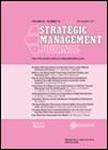-
作者:Chang, Sea Jin; Xu, Dean
作者单位:Korea University; University of Hong Kong
摘要:Combining the FDI spillover literature with a competitor analysis framework, we examine the relative size of spillover and competition effects in China between foreign entrants and local firms, among foreign entrants, and among local firms. Our results show that the increased presence of foreign entrants has generally benefited local firms nationally, but has negatively affected the survival rates of local firms in regional markets. Surprisingly, foreign entrants are crowded out not only by th...
-
作者:Lunnan, Randi; Haugland, Sven A.
作者单位:BI Norwegian Business School; Norwegian School of Economics (NHH)
摘要:The strategic alliance literature demonstrates that alliances create value for the partners, but also that many alliances fall short of expectations. This study addresses the complex issue of alliance performance. We follow 100 contractual alliances over a 5-year period, and study their performance in terms of abrupt termination, short-term performance, and long-term performance. The results indicate that alliances that are considered strategically important are less likely to be abruptly term...
-
作者:Danneels, Erwin
作者单位:Worcester Polytechnic Institute
摘要:According to dynamic capability theory, some firms are better able than others at altering their resource base by adding, reconfiguring, and deleting resources or competences. This study focuses on the first form of dynamic capability: the competence to build new competences. Two such second-order competences are studied: the ability to explore new markets and the ability to explore new technologies-referred to as marketing and R&D second-order competences, respectively. Using two wave panel d...
-
作者:Shah, Reshma H.; Swaminathan, Vanitha
作者单位:Emory University; Pennsylvania Commonwealth System of Higher Education (PCSHE); University of Pittsburgh
摘要:The growth of alliances has generated considerable interest in this topic among both academics and practitioners. While multiple factors may affect alliance success, partner selection emerges as one of the most influential. Previous studies on alliances present general models that assume the factors (e.g., trust, commitment, complementarity, financial payoff) that drive partner attractiveness and, in turn, the likelihood of selection, are consistent across varying alliance projects and situati...


